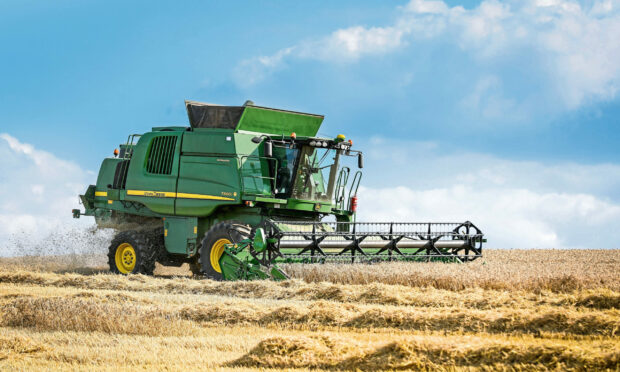Following a three-month consultation period, the window to respond on proposals for a new Agriculture Bill for Scotland comes to a close tonight.
While we won’t receive any news on what happens next when the clock strikes midnight, it is fair to say this is an important moment for farming and land management moving forward.
How land is used to not only produce food but also sequester carbon and enhance biodiversity is pivotal for decades to come, and the views expressed in this consultation will go some way to deciding how financial support from the public purse for those activities will be distributed over future decades.
Scottish Land and Estates has, for much of the last decade, been arguing that reform is needed to ensure we can support the maximum output possible from our land across all three metrics. Just as importantly, those involved in Scottish agriculture have long needed clarity about what the future holds and what steps need to be taken to invest and modernise existing practices.
Land management is complex, and decisions cannot be made in isolation, but with the right support Scotland’s land can play its full part in fighting climate change, restoring nature and producing food in accord with each other.
The consultation itself is split into six parts to reflect the proposals that the Scottish Government is considering for possible inclusion in the new Bill, which is expected in late 2023, but with implementation likely not to happen until 2025-26 at the earliest.
SLE vocal about lack of detail in Agriculture Bill
While the proposals will give important powers to government, we and others in the sector have been vocal about the disappointing lack of detail as to how those powers will be used, with the emphasis placed on the ability to add this detail through secondary legislation, which we do not feel is the best way to ensure proper scrutiny and the ability to reach consensus.
Our broad response is in keeping with the thinking laid out in the latest iteration of our #Route2050 paper which we launched at the Royal Highland Show back in June.
In terms of future payments, we largely agree with the framework set out by government in the consultation, with four tiers of payments – albeit with some concern about how easy the system will be to understand and administer, along with a lack of clarity on what the total budget will be. There is a real danger that the budget will not be sufficient to meet the multitude of requirements being placed upon it.
Clarity needed over payments
We have consistently agreed the need for a base level of support, with 50% of payments made to support active farming businesses. More clarity is needed regarding tier 2 enhanced-level direct payments but we have said these should be available to all businesses and such grants will help investment in long-term climate and biodiversity-friendly projects.
We are supportive of tier 3 elective payments targeting actions on innovation, supply chains and nature restoration but hold concerns around how the budget will be stretched to meet the wide range of activities required.
The consultation for our new Agriculture Bill closes today.
We have a bold Vision for Agriculture that aims to transform how we support farming and food production in Scotland.
Let us know your thoughts ➡ https://t.co/tIuYWJtP74 pic.twitter.com/m6bAgjtCJK
— Scot Gov Rural (@ScotGovRural) December 5, 2022
Tier 4 looks to be the “everything else” box with a huge range of proposals – but possibly lacking a clear strategic process of how it will operate.
Across all of these measures, it is imperative that we have tools in place that can measure existing and future biodiversity and carbon outcomes.
Resources need to help farmer share knowledge and skills
Other areas in the consultation include sections on delivery of key outcomes, and skills, knowledge transfer and innovation. In general terms, SLE has expressed a desire to see an integrated approach allowing businesses to have a mix of food production, forestry, carbon sequestration and natural capital benefits – and has said that greater resources are needed to share knowledge and skills that will help farmers to innovate in the decades ahead.
There is also a suite of agricultural holdings proposals, headlined to enable tenant farmers to take part in environmental schemes and payments. While we are supportive of the principle, it does not seem to consider or analyse what is possible within existing leases, which must be the starting point for this discussion as more legislation for the sake of it is rarely a good move.
Farmers, land managers and owners – not just rural organisations such as SLE – will have entered or will be finalising their responses but we hope it will lead to policy from government that will allow long-term strategic planning. Land management is complex, and decisions cannot be made in isolation, but with the right support, Scotland’s land can play its full part in fighting climate change, restoring nature and producing food in accord with each other. But it can only move at pace once we know what will constitute success – and then how success will be measured.
Stephen Young is head of policy at Scottish Land and Estates

Conversation